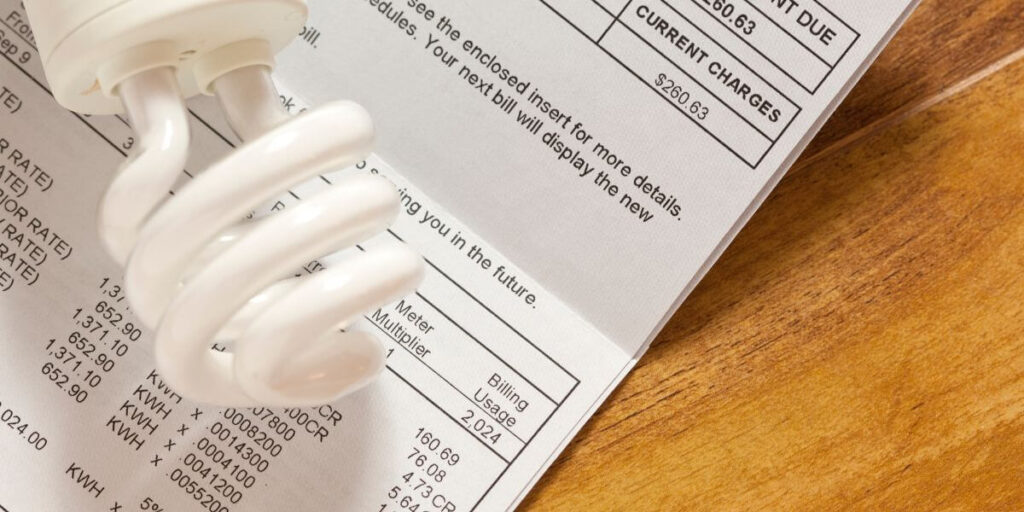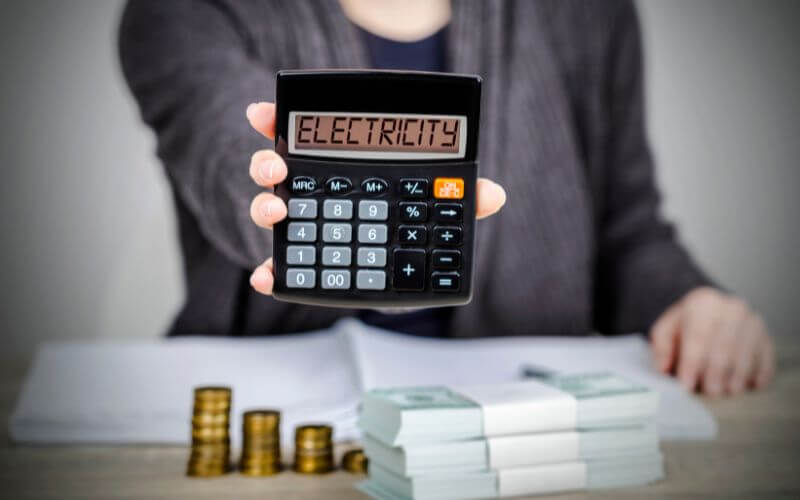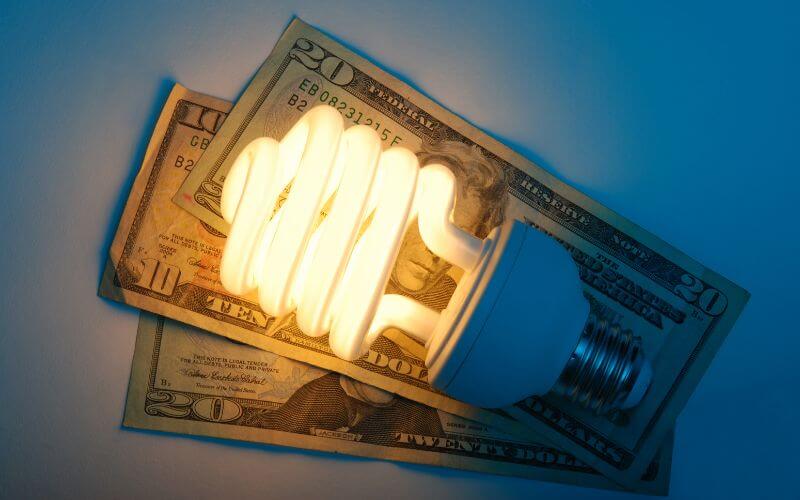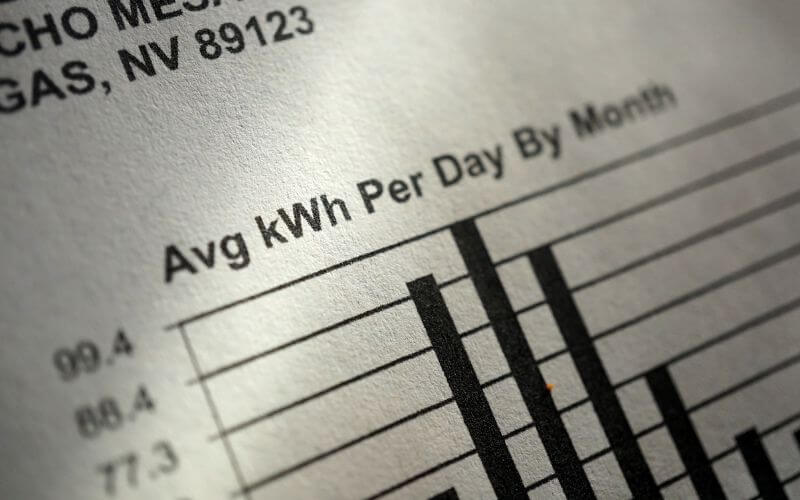Ever wondered how you compare to the rest of the US when it comes to electricity usage? Maybe you’re doing some research before you move out to live on your own for the first time, to help prepare your budget?
I’ve taken a look at the stats for how much electricity is used on average in the US and while there’s no single answer, I can at least make it a little bit easier for you to understand roughly how much electricity costs for one person.

How Much Electricity Does A Single Person Use?
The average amount of electricity used by a US residential customer is 894 kilowatt-hours per month. However, this is per customer, not per person – customers will pay for their entire household. There are no statistics on exactly how much a single person will use.
However, we can make some assumptions based on the data we have to help to work out how much electricity is used per person on average.
And of course, knowing the amount of electricity used in kilowatt-hours isn’t nearly as useful as knowing how much the average electricity bill is for one person, so we’ll take a closer look at that too.
How Much Does Electricity Cost?
Electricity costs vary across the United States, with the average cost being $0.14 per kilowatt-hour. It’s a drastic scale though, with the cheapest electricity being below 10 cents per kilowatt-hour (in Louisiana, Idaho, and Washington) and the most expensive being Hawaii’s $0.30 per kilowatt-hour.
Hawaii’s electricity is priced at more than double the US average, meaning it costs more than twice as much to run each electrical device in the home. Other states with a high cost per kilowatt-hour include Connecticut, Massachusetts, Rhode Island, and Alaska, which are all above $0.20 per kWh.
That’s one reason why it’s impossible to easily say how much electricity costs for one person a month – if you live in Hawaii then it costs three times as much as it would if you lived in Idaho -, which is a pretty significant difference (source).

The Average Electricity Bill
The average electricity bill in the US is $117.46 per month. That’s based on the average use of 893 kilowatt-hours per month at an average price of just below $0.14 per kilowatt-hour.
But in order to better understand how much electricity the average person living alone would use, we need to understand where that average consumption is coming from – we can then use that to estimate how much a single person might use.
But before we do that – some context. The information on the average bills and consumption are based on there being 136.6 million electricity customers in the US, while the population is 329.5 million. That means the average electricity customer is paying for the electricity of 2.4 people.
Now that we know that, we can make some assumptions on each different thing in the home that is consuming electricity – is it something that is based on the property size, or the number of people living there? And from that, we can estimate – and it is only an estimate – the average bill for a person living alone.

What Uses The Most Electricity In The Home?
The three largest categories of electricity use in the modern US home are air conditioning, space heating, and water heating.
Air conditioning makes up, on average, 17% of a home’s monthly consumption, space heating is responsible for 15%, and water heating 14%. In total, those three categories make up 46% of consumption.
Here’s a further breakdown, including whether we can likely estimate whether living alone would have an impact:
| Category | % of consumption | Average consumption (based on average total consumption) | Would living alone likely reduce this? | Estimated average consumption for one person |
|---|---|---|---|---|
| Air conditioning | 16.9% | 151.086 kWh | No | 151.086 kWh |
| Space heating | 14.8% | 132.312 kWh | No | 132.312 kWh |
| Water heating | 13.7% | 122.478 kWh | Yes | 51.0325 kWh |
| Lighting | 10.3% | 92.082 kWh | No | 92.082 kWh |
| Refrigerators | 7% | 62.58 kWh | No | 62.58 kWh |
| TVs and related | 6.9% | 61.686 kWh | No | 61.686 kWh |
| Clothes dryers | 4.5% | 40.23 kWh | Yes | 16.7625 kWh |
| Ceiling fans | 1.8% | 16.092 kWh | No | 16.092 kWh |
| Air handlers for heating | 1.6% | 14.304 kWh | No | 14.304 kWh |
| Separate freezers | 1.6% | 14.304 kWh | No | 14.304 kWh |
| Cooking | 1.4% | 12.516 kWh | No | 12.516 kWh |
| Dehumidifiers | 1.2% | 10.728 kWh | No | 10.728 kWh |
| Microwaves | 1.1% | 9.834 kWh | No | 9.834 kWh |
| Pool pumps | 1% | 8.94 kWh | No | 8.94 kWh |
| Air handlers for cooling | 0.8% | 7.152 kWh | No | 7.152 kWh |
| Humidifiers | 0.6% | 5.364 kWh | No | 5.364 kWh |
| Dishwashers | 0.6% | 5.364 kWh | No | 5.364 kWh |
| Clothes washers | 0.4% | 3.576 kWh | Yes | 1.49 kWh |
| Hot tub heaters | 0.4% | 3.576 kWh | No | 3.576 kWh |
| Evaporative coolers | 0.3% | 2.682 kWh | No | 2.682 kWh |
| Hot tub pumps | 0.1% | 0.894 kWh | No | 0.894 kWh |
| All other misc | 13% | 116.22 kWh | ? | 116.22 kWh |
Source:https://www.eia.gov/energyexplained/use-of-energy/electricity-use-in-homes.php
A lot of what we use at home is based more on the size of the home, not the number of people living there. Whether you are one person or a family of four, it takes the same amount of energy to cool or heat your home. You’ll still likely cook at the same times, and you will probably have a similar number of TVs and lights that you’re using at the same time.
But things like water heating will change – there’ll be fewer people taking a shower. You’ll be less likely to have a power-hungry deep freezer. And you’ll need to do less laundry too.
I’ve not made any assumptions about single people using hot tubs or swimming pools, and we can’t break down the miscellaneous category without knowing more. But this tells you that the average person living alone likely doesn’t use a lot less energy than a family would.
The Average Electricity Bill For One Person
Because most of the electrical devices we use at home will use the same amount of power as they would if a family lived in the home, we can estimate that the average electricity consumption for a person living alone will be 797 kilowatt-hours per month, costing an average $104.80.
That’s based on the table above and the average electricity cost, and of course would vary greatly depending on the cost of electricity where you live.
Other Factors
There are a couple of other factors that can have an impact on your electricity bill too. Where you live doesn’t just impact the cost of electricity per kilowatt hour, but also how much you’ll rely on your air conditioning unit. 94% of newer homes in the South have air-con, compared to around 75% in the West and Northeast.
And how modern the home is will have an impact too – more modern homes tend to have higher ceilings, so heating costs would in theory be higher while cooling costs may be lower, but they are also much better insulated, so there’s not as much need to heat the home as frequently.

The Bottom Line
There really is no simple answer to the average electricity cost per month for one person. We do know that one person living alone doesn’t use a lot less electricity than a family would, but instead a person living in a smaller apartment would use a lot less than someone in a larger home.
But the biggest factor is the huge discrepancy between electricity costs across the country, which could see someone paying 3x more than someone else living in another part of the country using exactly the same amount of electricity.
